Disclosure: Please note that some links are affiliate links, and at no additional cost to you, we earn a commission if you make a purchase.
If you would like to support this website in some way, using these links will help do exactly that.
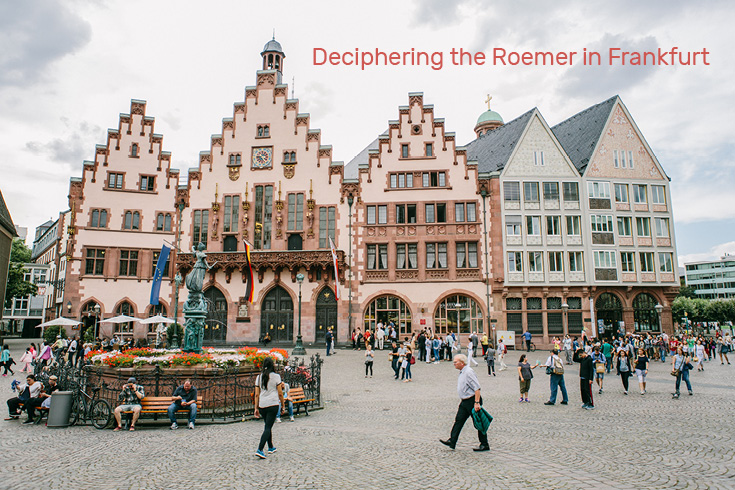
Before the stadium-sized exhibition halls Frankfurt am Main, Germany has today, there was the Römer, or Roemer for the umlaut-allergic. Roemer refers specifically to the City Hall complex that grew from a labyrinth of fancy merchant homes that were bought in 1405 by the city and retro-fitted for the city council’s needs. It was here that the first trade fairs were held, in the myriad of halls, nearby square, and neighboring streets, until the trade fairs couldn’t fit anymore. The Roemer resides in the center of the city on the Roemerberg, a square made out of Fachwerkhäusern, half-timbered houses.
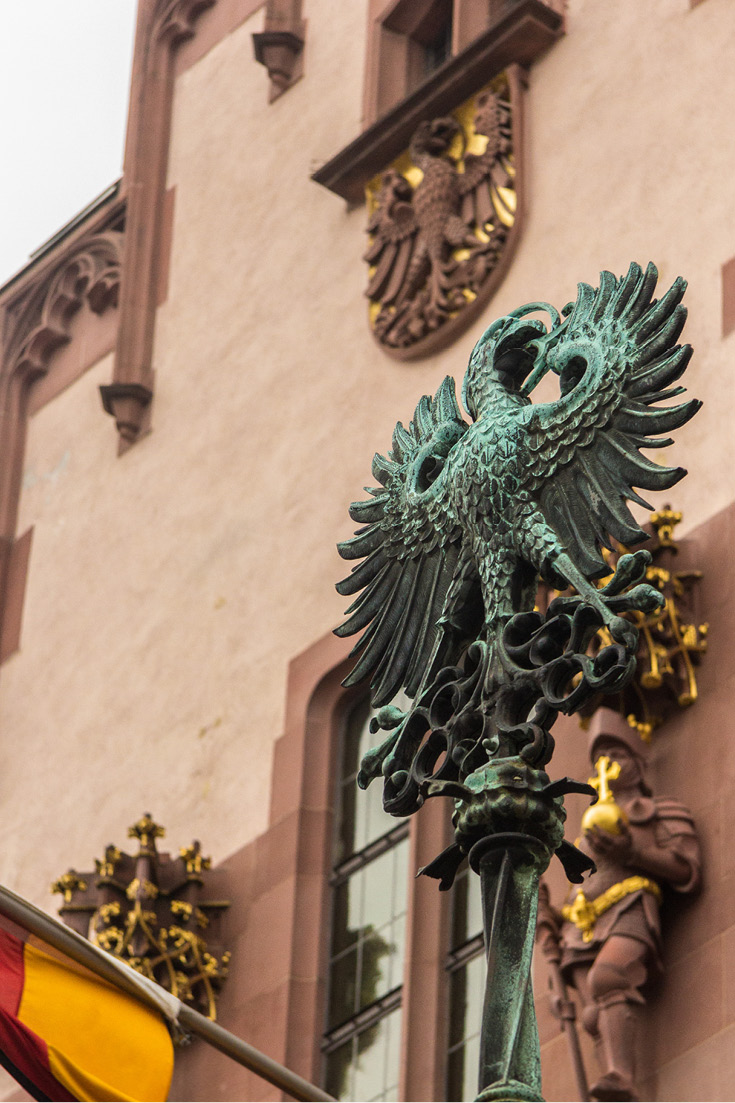
Why the Roemer? Like most good nicknames, no one is sure why the Roemer is called the Roemer. Some allege Italian visitors for the trade fairs stayed there and thus named it the German word for Romans, Roemer, or perhaps because of the building's ties to the Holy Roman Empire and its election of Kings. After a King was elected, the coronation dinner was held in the Roemer in the Kaisersaal, or Emperor Hall. The Roemer hosted the Kings of the Holy Roman Empire from 1562 to 1792.
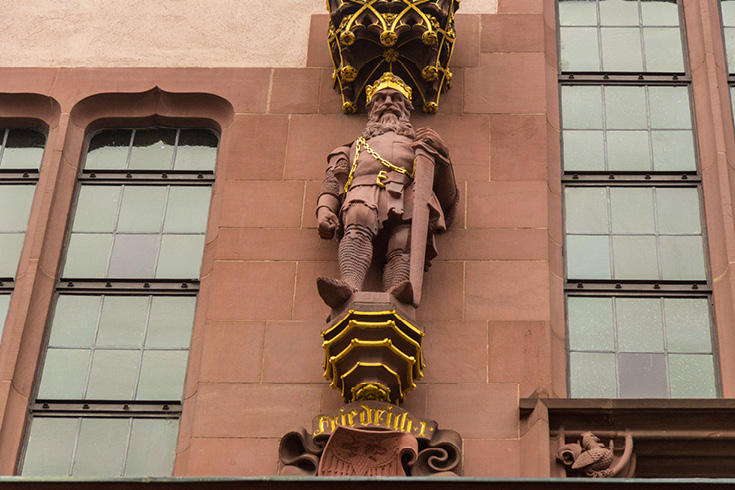
Comparing Germany’s Town Halls
Frankfurt am Main’s city hall complex is unlike any I have seen in Germany, and certainly completely different from earlier posts about the Rathaus in Bremen and the Neues Rathaus in Munich. That being said, it is built in the same architecture style as the Neues Rathaus in Munich, Gothic Revival. Both the Roemer and the Neues Rathaus in Munich were built or remodeled at a time when Germany was seeking to revisit the glory days of the time period belonging to Bremen’s Rathaus. If you missed those posts, and you like this one, I encourage you to check them out: Architecture Style Guide to the Neues Rathaus in Munich, and The Epic German City Hall All the Other City Halls Wish To Be.
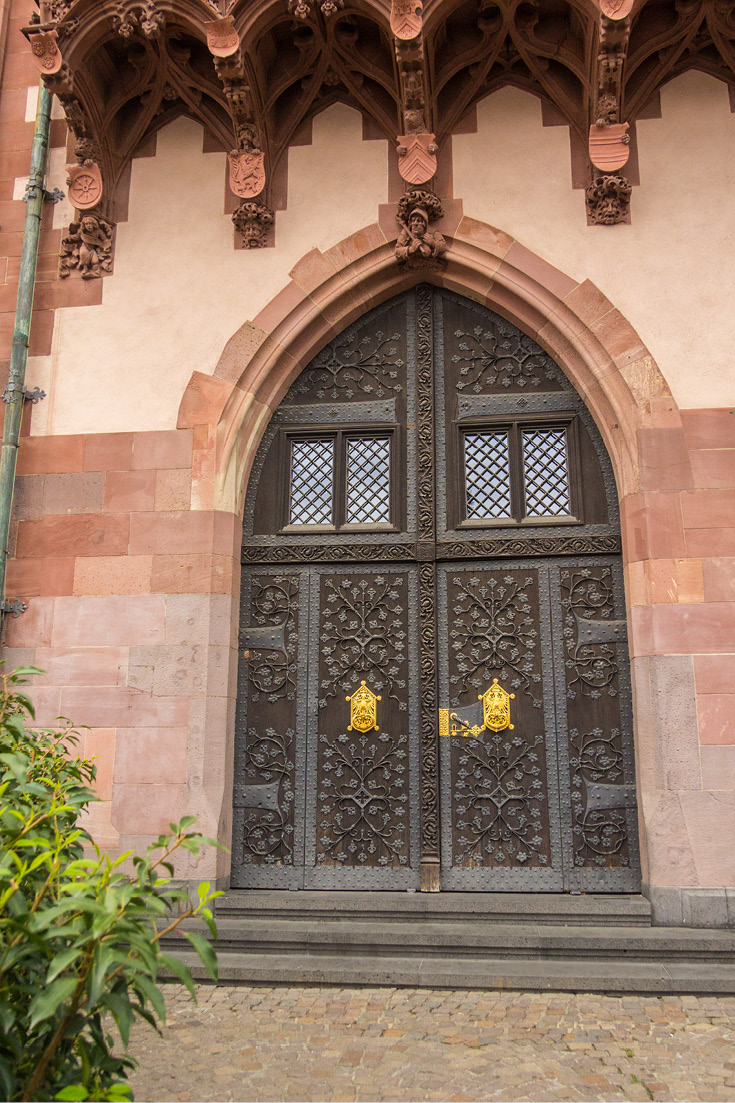
Symbolism on the Roemer
Typical for Gothic Revival, you’ll see pointed arches, decorative patterns, and embellished structural elements. Without a tour guide, the symbolism on the Roemer’s facade is missed by many visitors.
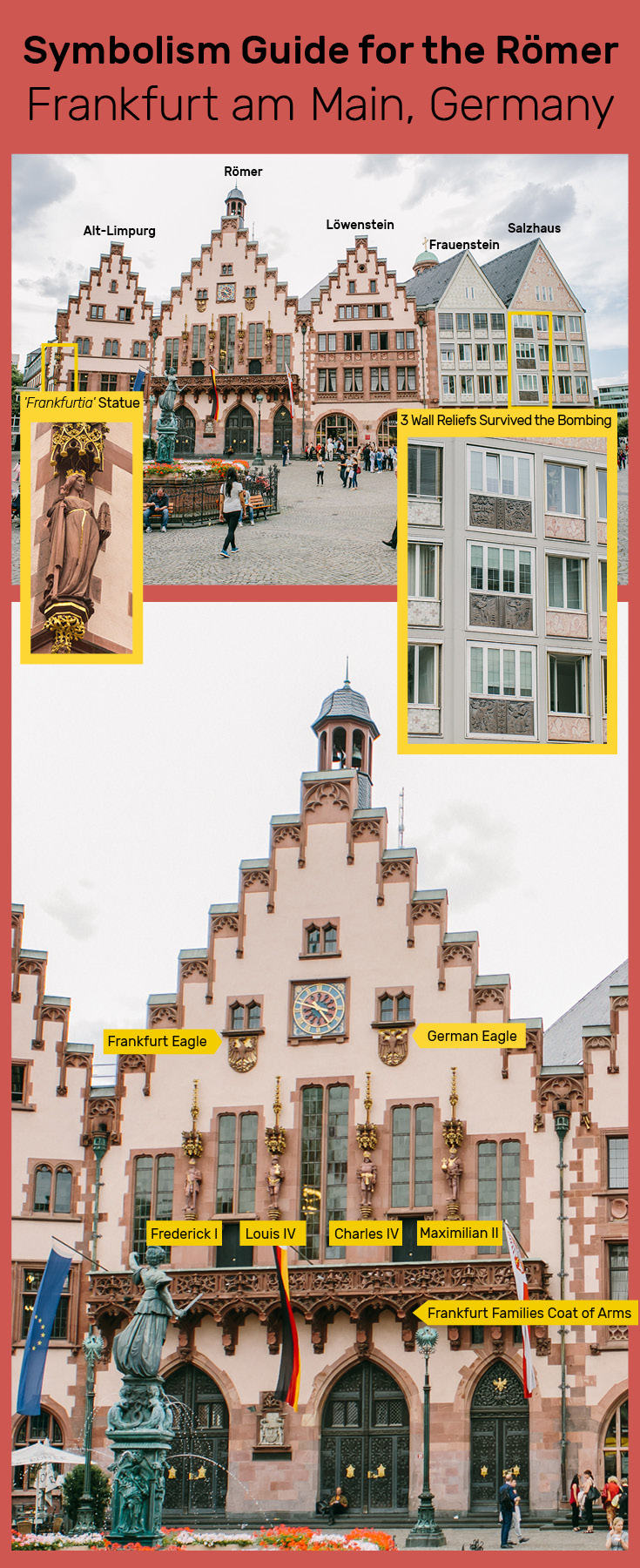
Top to Bottom, the Frankfurt am Main Roemer Iconography, Highlights and Descriptions
• Lantern cupola on top has not been refurbished after the bombings of World War II, it is as it was originally built in the 1700s.
• Clock built by Frankfurt clock-maker Hans Hochgesang in 1452-1454. The time can be read from inside the Kaisersaal as well.
• Two Eagle Sculpture reliefs, the single Eagle on the left is for Frankfurt, the double-headed Eagle on the right is for Germany.
• Four Holy Roman Emperors, all who had a significant impact on the city of Frankfurt am Main. From left to right, Frederick I, the first king elected in Frankfurt in 1152, Ludwig the Bavarian who extended the city’s trade rights in 1331, Charles IV for decreeing the Golden Bull of 1356, and Maximilian II, the first ruler crowned in the Frankfurt Cathedral in 1562.
• Below the balcony are coat of arms of various families of Frankfurt.
• Wall relief commemorates the 1900 remodel, “House of the Romans, bought and rebuilt by the city of Frankfurt am Main in 1405, and the town hall of the Reichstag and Imperial elections 1886 to 1900 by Max Meckel, newly manufactured.”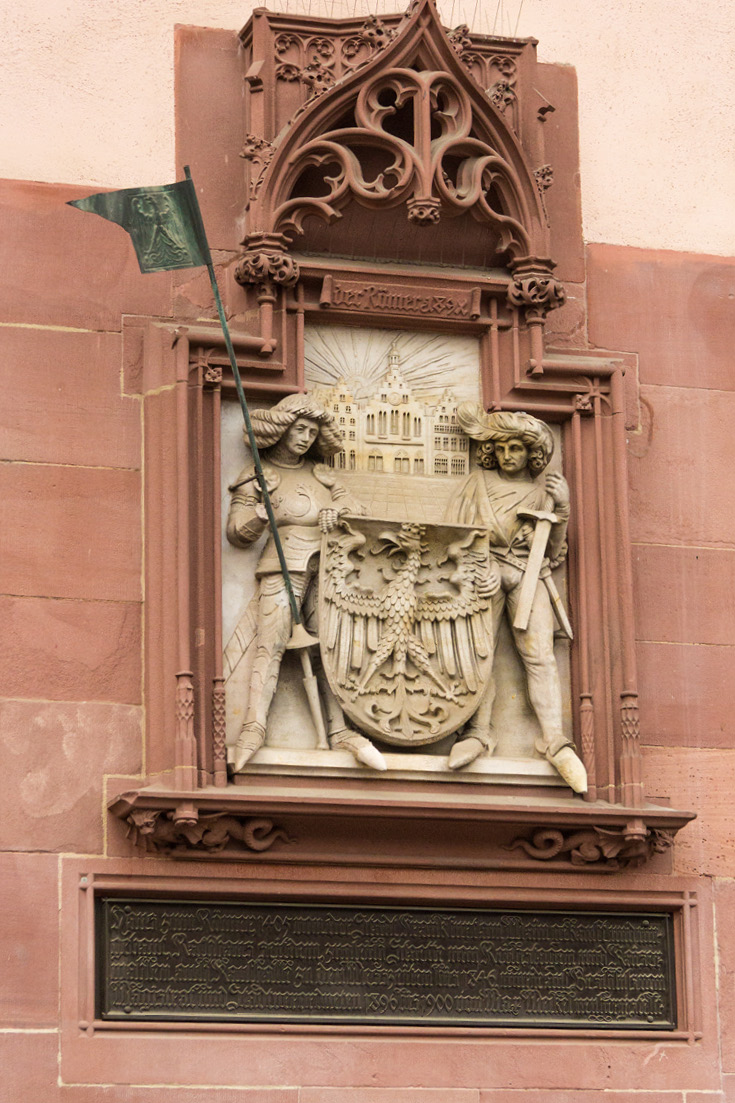
On the neighboring building front to the left of the Roemer, the Alt-Limpurg house, be sure to see the ‘Frankfurtia’, Statue, or as Germans know her, Francofurtia, the female embodiment, protector of the city of Frankfurt. She's holding the sword of Charlemagne in her right hand and the Pfarrturm, church tower in her left.
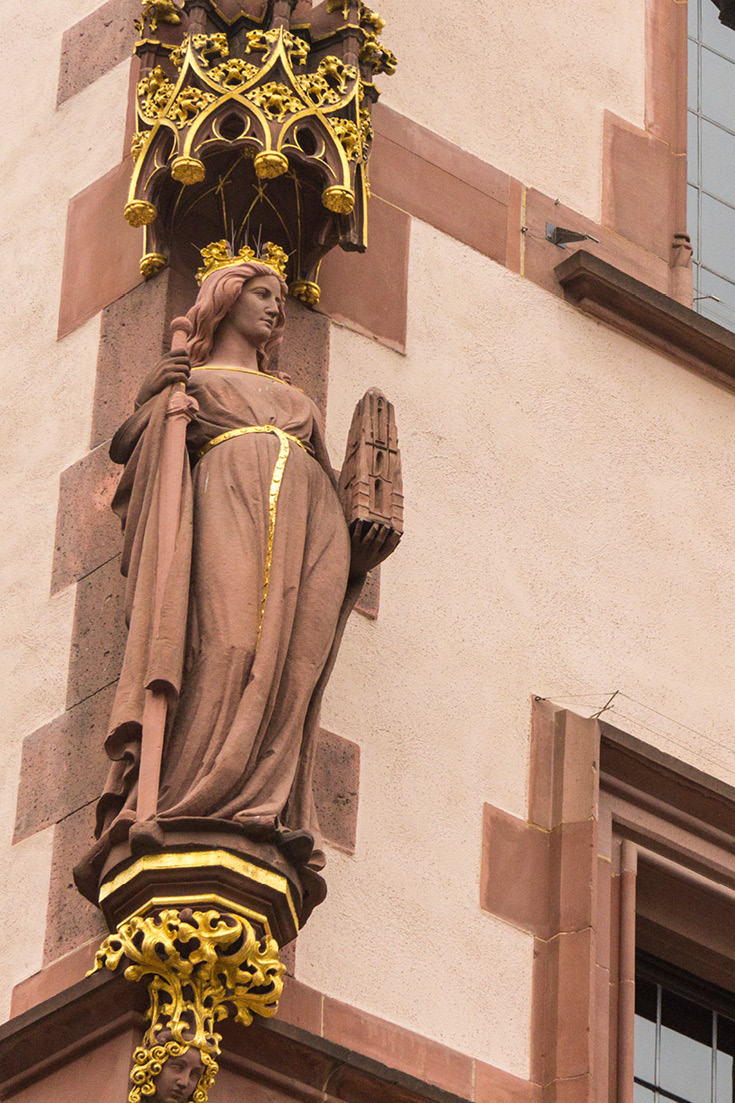
Finally, on the far right side of the Roemer facade, the Frauenstein and Salzhaus, look for the three surviving wall reliefs that were salvaged from the World War II bombings. They serve as a reminder for all of what was lost. Currently, there is a Frankfurt Tourist Information Office located in this part of the Roemer.
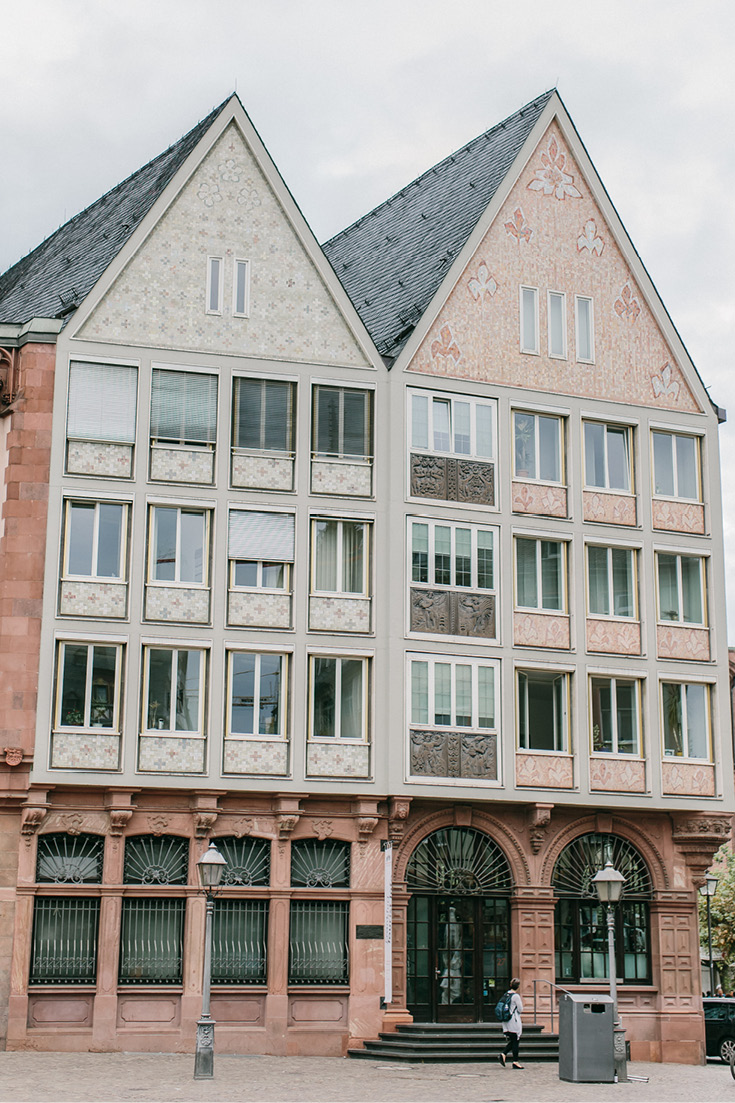
Follow Along
If you enjoyed this article, or these topics sound interesting to you, you'll love our weekly newsletter. You'll receive the newest posts each week and exclusive access to free planning resources like ‘Packing List & Tips for 2 Weeks in Germany’ and ‘Everything You Need to Rent a Car in Germany’.
Thank you for reading!

